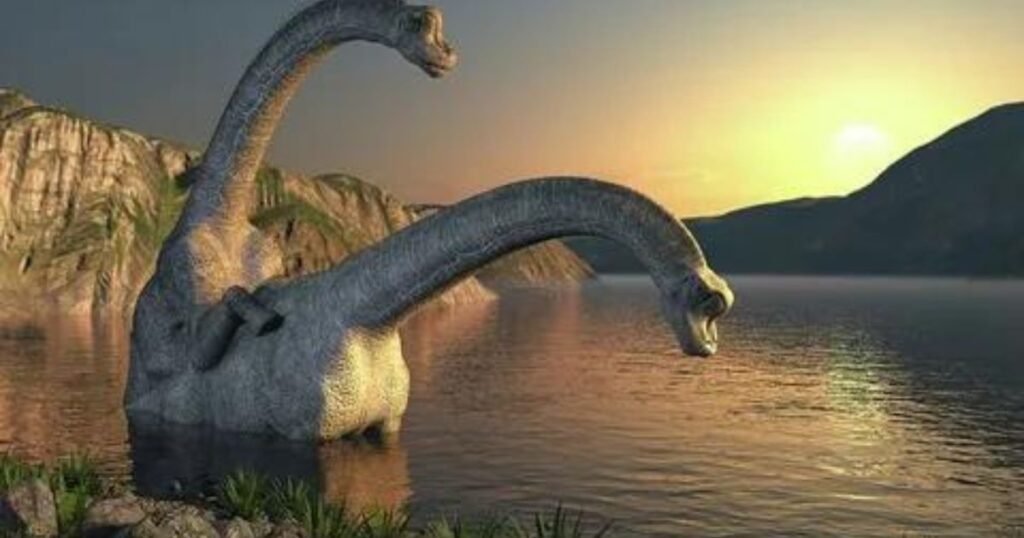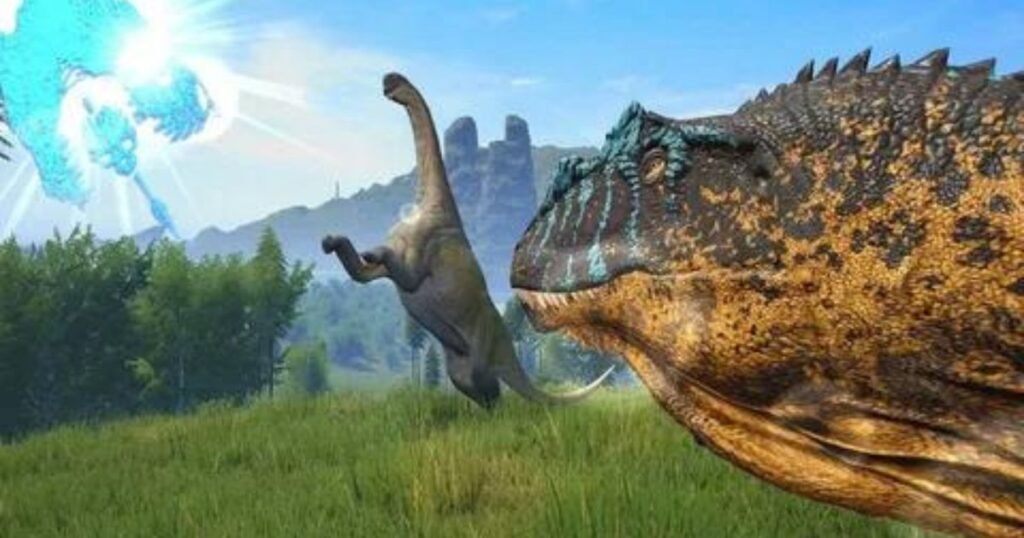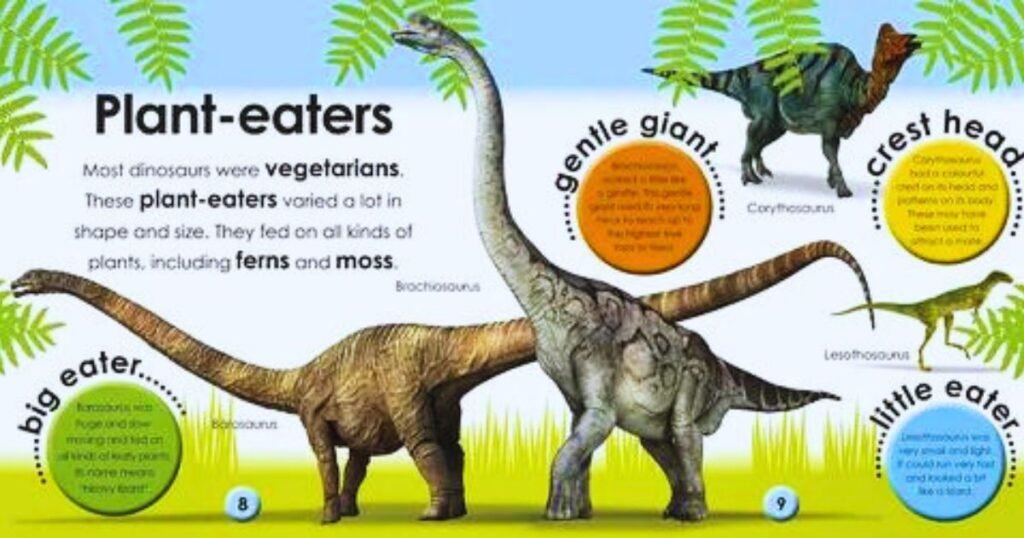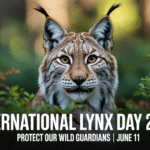Dinosaurs have always been a topic of fascination for people of all ages. While most of us are familiar with the famous T-Rex or the soaring Pterodactyls, not many people know about the existence of long-necked dinosaurs. These fascinating creatures, known as sauropods, were among the largest animals ever walking the Earth. Their long necks allowed them to reach vegetation out of reach for other herbivores, making them the dominant species of their time.
However, despite their importance in the prehistoric world, not much is known about these creatures. In this post, we will discuss further the world of long-necked dinosaurs, exploring their physical features, behavior, and the latest discoveries that have helped us unravel the mystery of these magnificent creatures. Get ready to be fascinated and intrigued by these gentle giants that once roamed the Earth.
Read More: animalvised.com
Introduction: The fascination with long-necked dinosaurs
Long-necked dinosaurs have long captured the imagination of both children and adults alike. These fascinating creatures, known as sauropods, have intrigued paleontologists and dinosaur enthusiasts for decades. Their elongated necks, towering over the prehistoric landscape, have sparked numerous questions and theories about their purpose and unique adaptations.
But what exactly was the purpose of their elongated necks? How did they manage to support such massive structures? These are questions that have puzzled scientists for years, leading to a myriad of theories and hypotheses.
One prevailing theory suggests that the long necks of these dinosaurs allowed them to reach vegetation that was otherwise inaccessible to other herbivorous dinosaurs.
Another fascinating aspect of these long-necked dinosaurs is their skeletal structure. Despite their seemingly fragile appearance, their necks were intricately designed to support their massive heads and provide flexibility for feeding. The vertebrae in their necks were hollow, lightweight, and connected by complex joints, allowing for strength and mobility.
Discovery of the first long-necked dinosaur fossils
The discovery of the first long-necked dinosaur fossils was groundbreaking in paleontology. Before this finding, the prevailing belief was that dinosaurs were predominantly small and had relatively short necks.

In the late 19th century, a team of paleontologists stumbled upon an astonishing set of fossils in a remote region of what is now known as Argentina. These fossils belonged to a dinosaur with an extraordinarily long neck, a feature never seen before in dinosaurs.
Further excavation and analysis revealed that this long-necked dinosaur belonged to a group known as the sauropods. Sauropods were characterized by their immense size, long necks, and small heads. They were herbivorous giants that roamed the Earth during the Jurassic and Cretaceous periods.
Since this groundbreaking discovery, numerous other long-necked dinosaur fossils have been uncovered worldwide, each adding to our knowledge of these enigmatic creatures. Scientists continue to study these fossils, employing advanced techniques such as 3D scanning and computer modeling to reconstruct the anatomy and behavior of these ancient giants.
The different types of long-necked dinosaurs
Long-necked dinosaurs, or sauropods, are some of the most fascinating creatures ever roamed the Earth. These majestic giants captivate our imagination with their immense size and elongated necks, reaching lengths that would put giraffes to shame. But did you know that there were different types of long-necked dinosaurs? Let’s delve into the diverse world of these prehistoric marvels.
Apatosaurus
One of the most well-known long-necked dinosaurs is the Apatosaurus, formerly Brontosaurus. This dinosaur boasted a long neck and tail, with a massive body that could span up to 75 feet. Its neck alone could measure up to 30 feet, allowing it to reach vegetation that other herbivores couldn’t access. Apatosaurus roamed the Late Jurassic period, approximately 154 to 150 million years ago.

Diplodocus
Another famous member of the long-necked dinosaur family is the Diplodocus. This dinosaur is recognizable for its whip-like tail and elongated neck, which could reach up to 25 feet in length. Diplodocus was an herbivore that lived around 154 to 152 million years ago during the Late Jurassic period. Its slender body and long neck were adaptations that allowed it to browse vegetation from trees and shrubs.

Brachiosaurus
Brachiosaurus, known for its massive size and towering presence, is another notable long-necked dinosaur. This dinosaur had an exceptionally long neck that reached up to 30 feet, enabling it to graze on vegetation high above the ground. Brachiosaurus lived approximately 154 to 153 million years ago during the Late Jurassic period. Its immense size, estimated to be around 85 feet in length and weighing up to 50 tons, made it one of the most giant dinosaurs ever discovered.

Camarasaurus
There were also other lesser-known long-necked dinosaurs, such as Camarasaurus, Mamenchisaurus, and many more, each with unique features and adaptations. These dinosaurs roamed different parts of the world during various geological periods, contributing to the rich diversity of the long-necked dinosaur lineage.

Argentinosaurus
One of the giant sauropods ever discovered measured around 100 feet in length and weighed an astonishing 80 tons. This gentle giant holds records for being one of the biggest animals ever to walk on land.

Studying the different types of long-necked dinosaurs provides valuable insights into their evolutionary history, anatomy, and ecological roles. Understanding these magnificent creatures helps us unravel the mysteries of the past and appreciate the extraordinary diversity of life that once flourished on our planet.
Evolutionary advantages of long necks
Accessing food sources
One of the primary benefits of having an extended neck was accessing food sources that were otherwise out of reach for other herbivorous dinosaurs. With their elevated browsing capabilities, sauropods could graze on vegetation at heights that were inaccessible to other plant-eating creatures. This gave them a significant advantage in resource utilization, allowing them to thrive in environments where food scarcity might have been an issue.
Reducing the need for the extensive movements
Moreover, the long necks of sauropods enabled them to cover vast areas without excessive movement. By extending their channels, they could reach a broader range of plants, reducing the distance they had to travel in search of sustenance. This energy-efficient foraging strategy gave them a competitive edge in a world where survival often depended on efficiently acquiring nutrients.
Social interactions & defense mechanisms
Additionally, the long necks of sauropods may have played a crucial role in social interactions and defense mechanisms. These extended appendages could have been used for intraspecific combat, where males engaged in neck-pushing contests to establish dominance within their communities. Furthermore, the long necks could have served as a visual display, conveying vital information about an individual’s health and genetic quality, thereby influencing mate selection and reproductive success.
While the evolutionary advantages of long necks in sauropods are still being explored and debated, it is clear that these anatomical adaptations played a significant role in their survival and dominance during the Mesozoic Era. The ability to access abundant vegetation, reduce the need for extensive movement, and engage in social interactions and defense strategies undoubtedly contributed to the success of these magnificent long-necked dinosaurs.
The feeding habits and diet of long-necked dinosaurs
Long neck dinosaurs were herbivores who relied on plants for sustenance. One of the most striking features of long-necked dinosaurs is their incredibly long necks, which could reach lengths of up to 50 feet or more. This allowed them to get vegetation high above the ground that other herbivorous dinosaurs couldn’t access. But how did they feed?

Researchers believe that sauropods used their long necks to browse the foliage of trees and plants. They would sweep their heads from side to side, stripping leaves and branches as they moved. Some sauropods, like the Diplodocus, had narrow, pencil-like teeth perfect for plucking leaves, while others, such as the Brachiosaurus, had spoon-shaped teeth ideal for stripping foliage.
But the question remains, how did these massive creatures sustain themselves on a purely vegetarian diet? Sauropods were enormous animals, with some weighing up to 70 tons, and they needed an incredible amount of food to survive. Fossilized stomach contents and coprolites (fossilized feces) have provided valuable insights into their dietary habits.
Studies have shown that long-necked dinosaurs consumed vast quantities of low-nutrient plant material. They would continuously graze on ferns, conifers, and other vegetation to meet their energy requirements. Some researchers hypothesize that they may have even swallowed rocks to aid in the digestion of rigid plant material, similar to modern-day birds known as gastroliths.
Interestingly, sauropods had extremely long digestive tracts, which suggests that they had a slow metabolism. This allowed them to extract as many nutrients as possible from their food, compensating for the low nutritional value of the plants they consumed.
How did long-necked dinosaurs support their necks?
We must first delve into their anatomy to understand how long-necked dinosaurs supported their necks. The necks of sauropods were not just long but also remarkably strong and flexible. The vertebrae in their necks were specialized to bear the weight and strain of such an elongated structure.
Key Adaptation
One of the key adaptations in the neck vertebrae of sauropods was the presence of air sacs. These air sacs, similar to those found in modern birds, were interconnected with the lungs and extended into the neck region. By being filled with air, these sacs helped to lighten the overall weight of the neck, making it easier to support.
Spongy bone tissue
Furthermore, the neck vertebrae of long-necked dinosaurs featured unique anatomical features. The center, or the vertebrae’s main body, was often hollowed out or filled with spongy bone tissue. This not only reduced the weight of the neck but also provided additional strength and support.
Network of ligaments and muscles
Additionally, sauropods had a network of ligaments and muscles that helped support and control the movement of their necks. These structures played a crucial role in maintaining balance and stability while allowing for remarkable flexibility and range of motion in these dinosaurs.

By analyzing the stress and strain patterns on the neck vertebrae, scientists have discovered that the neck was not held in a completely horizontal position as previously believed. Instead, it likely had a gentle upward curve, which helped distribute the weight more efficiently and reduced the strain on individual vertebrae.
Possible reasons for the evolution of long necks
The evolution of long necks in dinosaurs has long fascinated scientists and paleontologists. It is a remarkable adaptation that allows certain species to reach vegetation above the ground and thrive in their environments. While there is no definitive answer, several theories have been proposed to explain the possible reasons behind the evolution of long necks.
Exploitation of food sources
One theory suggests that long necks allowed dinosaurs to exploit food resources inaccessible to their shorter-necked counterparts. By reaching up into the tree canopy or stretching across vast distances to graze on vegetation, dinosaurs with long necks had a competitive advantage in finding and consuming food.
Sexual Selection and display
Another theory proposes that long necks were used for sexual selection or display. Just like the elaborate antlers of male deer or the vibrant plumage of male birds, long necks may have served as a visual signal of fitness and dominance. Male dinosaurs with longer necks may have been more attractive to potential mates, leading to increased reproductive success and the continuation of the long-necked trait across generations.

Defensive advantages
Furthermore, long necks could have been advantageous for defensive purposes. Some researchers speculate that dinosaurs with long necks could use their necks as a weapon, either by delivering powerful blows or by using them as a means of intimidation against predators. The ability to strike from a distance could have provided a survival advantage, deterring potential threats or allowing the dinosaur to escape dangerous situations.
Lastly, the evolutionary development of long necks may have been a result of a combination of factors. It is possible that a variety of environmental pressures, sexual selection, and defensive advantages contributed to the gradual elongation of necks in specific dinosaur lineages. Over time, these adaptations became more pronounced and refined, leading to the incredible diversity of long-necked dinosaurs that once roamed the Earth.
The social behavior and communication of long-necked dinosaurs
While we can only speculate based on the evidence available, researchers have made remarkable discoveries that shed light on the social lives of long-necked dinosaurs. One of the key findings is that these dinosaurs likely lived in herds or groups. Fossilized trackways have revealed multiple sets of sauropod footprints moving in the same direction, suggesting a cohesive, social structure.
Communication
Communication among long-necked dinosaurs would have been crucial for coordinating their movements and ensuring group cohesion. Although these dinosaurs lacked vocal cords, they may have utilized other means of communication. Recent studies suggest that they could have used low-frequency vocalizations or infrasound, which can travel long distances and be detected by other group members.
Visual communication
Furthermore, the distinctive anatomical features of long-necked dinosaurs, such as their long necks and tails, may have played a role in visual communication. These exaggerated body parts could have been used for elaborate displays, courtship rituals, or even as optical signals within the group.

Parental care
Another intriguing aspect of their social behavior is the possibility of parental care. Some fossilized nests and egg clutches have been discovered, indicating that long-necked dinosaurs may have exhibited nesting behavior and cared for their young. This suggests social complexity and nurturing behavior among these ancient giants.
Extinction and the disappearance of long-necked dinosaurs
There are several theories surrounding the extinction of these magnificent giants.
Climate Change
One prominent hypothesis suggests that dramatic shifts in climate played a significant role. During the late Cretaceous period, the Earth experienced drastic changes, including the formation of the supercontinent Pangaea and subsequent breakup, leading to the formation of separate landmasses. These changes likely resulted in alterations to global climate patterns, such as changing rainfall patterns and the emergence of new habitats.
Competition for food resources
Another theory proposes that competition for resources played a role in the demise of long-necked dinosaurs. As other groups of dinosaurs evolved and diversified, they may have outcompeted the sauropods for available food sources. With their massive size and slow movement, long-necked dinosaurs may have struggled to adapt to these new challenges, ultimately leading to their decline.
Volcanic erruptions or asteroid impacts
Additionally, catastrophic events, such as volcanic eruptions or asteroid impacts, cannot be disregarded when discussing the extinction of any dinosaur species, including the long-necked dinosaurs. These cataclysmic events would have had devastating effects on the environment, causing widespread destruction and altering ecosystems on a global scale.
Conclusion: The enduring legacy of long-necked dinosaurs
In conclusion, the long-necked dinosaurs have left an enduring legacy in paleontology and continue to captivate our imagination. These majestic creatures, known as sauropods, have fascinated scientists and dinosaur enthusiasts for centuries.
Their incredibly long necks, some reaching up to 30 feet, allowed them to browse vegetation at towering heights, giving them a unique advantage in their prehistoric environment. These massive herbivores roamed the Earth during the Mesozoic Era, dominating the landscape with their colossal size.
The discovery of sauropod fossils has provided invaluable insights into these fascinating creatures’ anatomy, behavior, and evolution. By studying the structure of their bones, scientists have been able to estimate their weight, analyze their locomotion, and even speculate on their feeding habits.
We hope you enjoyed our deep dive into the world of long-necked dinosaurs. These magnificent creatures have captivated our imaginations for years, and we are thrilled to have shared our knowledge and insights with you. By unraveling the mystery of these unique dinosaurs, we have gained a greater understanding of their characteristics, behavior, and ecological significance.
What is the difference between a Brontosaurus and a Brachiosaurus?
There is no difference between a Brontosaurus and a Brachiosaurus. The two names refer to the same dinosaur. The name Brontosaurus was first used in 1879, but it was later determined that it had already been used for another dinosaur. In 1903, the name Brachiosaurus was officially adopted for this dinosaur.
What dinosaur has a long neck like a giraffe?
Like a giraffe, the Brachiosaurus is a dinosaur with a long neck. It was one of the most giant dinosaurs ever to live, and it had a long neck that could reach up to 40 feet in length. This allowed it to go high up into the trees to feed on leaves.
What is the closest thing to a dinosaur alive today?
The closest thing to a dinosaur alive today is the ostrich. Ostriches are giant, with long necks and legs and flightless birds. They are also herbivores, just like many dinosaurs.
What dinosaur looks like a Brontosaurus?
The dinosaur that looks most like a Brontosaurus is the Apatosaurus. Apatosaurus is a close relative of Brachiosaurus and has a very similar appearance. The main difference between the two dinosaurs is that Apatosaurus has a shorter neck.
What is related to a Brachiosaurus?
Brachiosaurus is related to many other sauropod dinosaurs, including Apatosaurus, Diplodocus, and Diplodocus. Sauropods were a group of enormous, long-necked dinosaurs that lived during the Mesozoic Era.
Are Brachiosaurus and Apatosaurus the same?
Brachiosaurus and Apatosaurus are not the same dinosaur. They are closely related, but they have some key differences. Brachiosaurus has a longer neck and shorter tail than Apatosaurus. Brachiosaurus also has a more sloping back, while Apatosaurus has a more straight back.
Are Ultrasaurus and Brachiosaurus the same?
Ultrasaurus and Brachiosaurus are not the same dinosaurs. Ultrasaurus was a more enormous dinosaur than Brachiosaurus, with a longer neck. Ultrasaurus was also heavier than Brachiosaurus.
What dinosaur looks like a Brontosaurus?
The dinosaur that looks most like a Brontosaurus is the Apatosaurus. Apatosaurus is a close relative of Brachiosaurus and has a very similar appearance. The main difference between the two dinosaurs is that Apatosaurus has a shorter neck.
Other dinosaurs that look similar to Brontosaurus include:
Diplodocus
Supersaurus
Barosaurus
What is related to a Brachiosaurus?
Brachiosaurus is related to many other sauropod dinosaurs, including:
Apatosaurus
Diplodocus
Supersaurus
Barosaurus
Ultrasaurus
Argentinosaurus
Sauropods were a group of large, long-necked dinosaurs that lived during the Mesozoic Era. They were the largest land animals that have ever lived, and some of them, like Argentinosaurus, could reach lengths of over 100 feet.
What was the deadliest dinosaur?
While the answer to the deadliest dinosaur might be difficult because it depends on many factors, such as the size of the dinosaur, its bite force, and hunting behavior. However, some of the most likely contenders for the title of deadliest dinosaur include:
Tyrannosaurus rex
Spinosaurus
Carcharodontosaurus
Giganotosaurus
Allosaurus
These dinosaurs were all large, powerful predators with sharp teeth and claws. They were also fast and agile, making them formidable hunters.
What is the most giant dinosaur to ever live?
The giant dinosaur ever lived is still a matter of debate. Some scientists believe that Argentinosaurus was the largest, while others believe that the title belongs to Shantungosaurus, a sauropod dinosaur that lived in China during the Late Cretaceous Period. Shantungosaurus was estimated to be over 80 feet long and weighs up to 80 tons.










